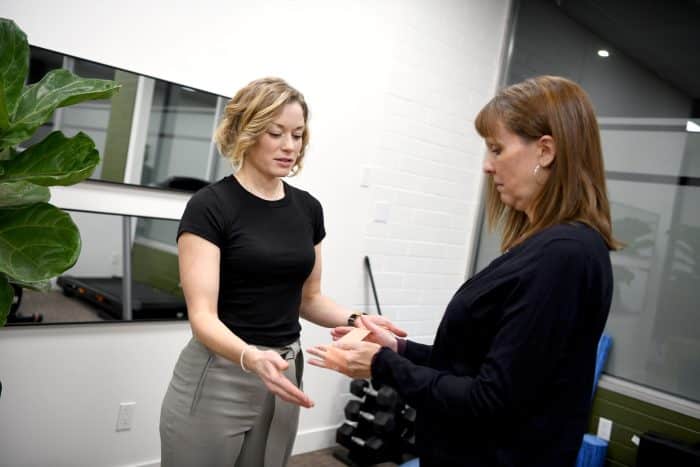Different Modalities
Used During Physiotherapy
Physiotherapy is a versatile and dynamic field focused n restoring movement and function to individuals affected by injury, illness, or disability. The treatments used in physiotherapy can vary based on the condition and individual needs of the patient. Different modalities are employed to improve mobility, reduce pain, and promote healing. Here’s an overview of some commonly used modalities during physiotherapy:

- Manual Therapy
Manual therapy includes hands-on techniques used by physiotherapists to manipulate muscles, joints, and soft tissues. This can help alleviate pain, improve flexibility, and restore proper joint movement. Common manual therapy techniques include:
- Joint Mobilization: Gentle movements applied to a joint to increase its range of motion.
- Soft Tissue Mobilization: Techniques like massage to treat muscle stiffness, scar tissue, and tension.
- Myofascial Release: Focuses on relieving tension in the fascia (the connective tissue surrounding muscles).
- Therapeutic Exercise
Exercise is a cornerstone of physiotherapy treatment. It is used to strengthen muscles, improve flexibility, and restore function. Physiotherapists design tailored exercise programs based on the patient’s goals and condition. These exercises may involve:
- Stretching Exercises to improve flexibility and joint range of motion.
- Strengthening Exercises to build muscle mass and support injured areas.
- Postural Exercises to promote proper posture and reduce strain.
- Heat and Cold Therapy
Heat and cold therapy, or thermotherapy and cryotherapy, are effective in managing pain and swelling:
- Cold Therapy (Cryotherapy): Cold packs are applied to reduce inflammation and numb acute pain.
- Heat Therapy (Thermotherapy): Heat pads or warm baths can help relax muscles, improve blood circulation, and alleviate chronic pain
- Electrical Stimulation
Electrical modalities use electrical impulses to stimulate muscles and nerves. This can reduce pain, promote muscle function, and enhance recovery. Common forms of electrical stimulation include:
- Transcutaneous Electrical Nerve Stimulation (TENS): A device that delivers mild electrical impulses to nerve pathways, helping to reduce pain.
- Neuromuscular Electrical Stimulation (NMES): Uses electrical currents to stimulate muscle contractions and prevent muscle atrophy.
- Ultrasound Therapy
Ultrasound therapy uses sound waves to penetrate deep into tissues, promoting healing by increasing blood flow and reducing muscle spasms. It is commonly used for conditions involving muscle, tendon, and joint pain. The sound waves can help accelerate tissue repair by promoting collagen formation and reducing inflammation.
- Traction Therapy
Traction therapy involves applying a pulling force to stretch the spine and relieve pressure on the discs and nerves. It’s commonly used for patients with herniated discs, sciatica, or neck and back pain. Traction can be either manual or mechanical, depending on the type of therapy needed.
- Acupuncture and Dry Needling
Acupuncture involves inserting thin needles into specific points on the body to relieve pain and promote healing. Dry needling, similar to acupuncture, uses needles to target trigger points in muscles. Both modalities aim to stimulate healing and relieve chronic muscle pain.
- Kinesiology Taping
Kinesiology taping involves the application of elastic therapeutic tape to muscles and joints. The tape helps support muscles and joints without restricting movement, reduces pain, and promotes blood circulation. It is often used for sports injuries or to manage conditions like tendinitis and muscle strains.
Conclusion
Physiotherapists employ a combination of these modalities to create personalized treatment plans tailored to individual needs. Whether recovering from an injury, managing chronic pain, or improving mobility, these treatments are designed to restore function and promote overall well-being. If you’re experiencing pain or mobility issues, consult with our physiotherapist to find out which modalities may be best suited to your specific condition.
